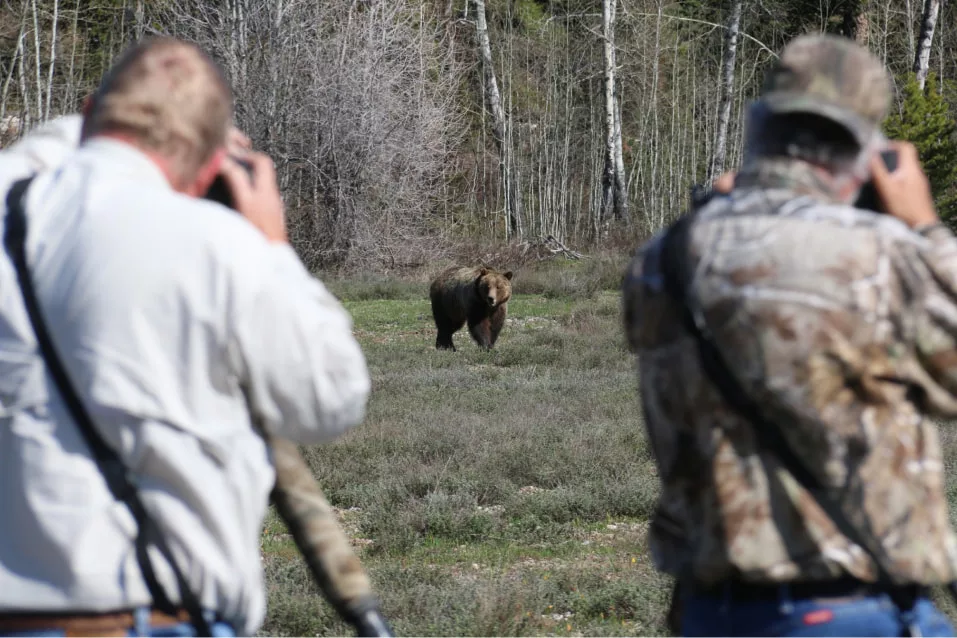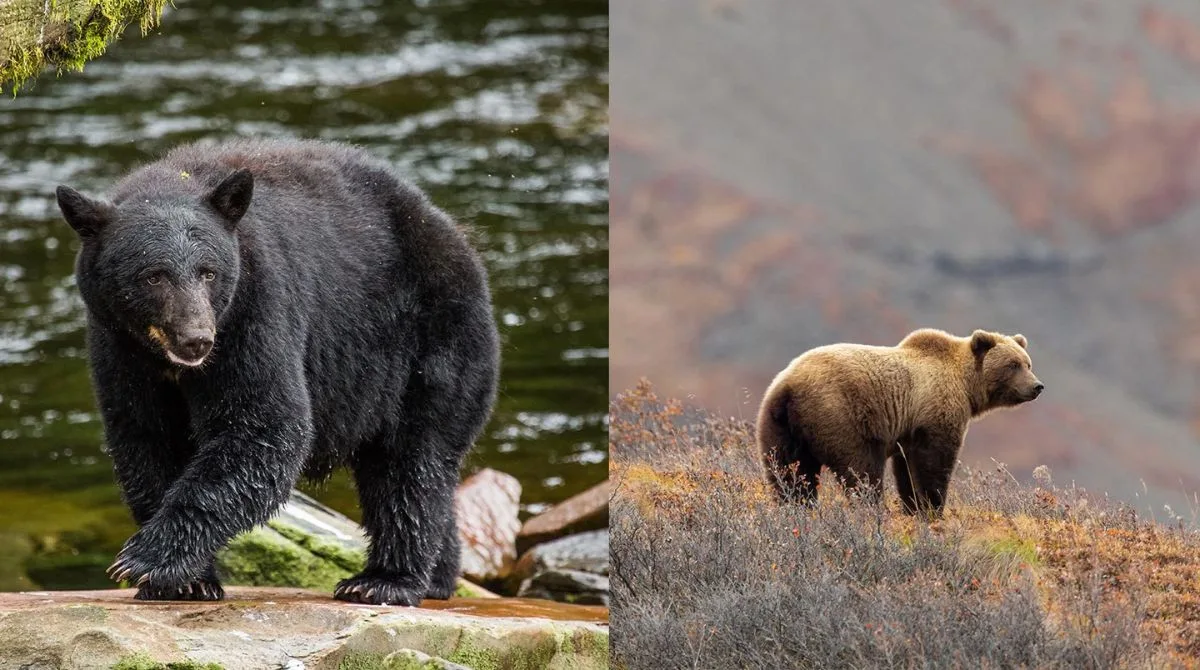
Learn About Wyoming’s Bears
Exploring the differentiating attributes of grizzly and black bears offers a captivating journey into the realm of Wyoming’s wildlife diversity. Characterized by their distinctive physical traits, behavioral tendencies, and habitat preferences, these two prominent species help shape the natural narrative of the state. From the rugged topography of the Teton Range to the expanses of Yellowstone’s forests, discerning the variances between grizzly bears and black bears helps visitors and residents alike cohabitate while minimizing human-bear conflicts.
Black vs Grizzly Bears
There are many notable physical differences between black bears and grizzly bears, including their facial profiles, claw shape, and ears. These differences can be helpful in distinguishing between the two bear species when observing them in their natural habitats in Wyoming.
Identify Bear Behavior
There is a noticeable difference in how black and grizzly bears interact in Wyoming. Black bears are less aggressive and they may retreat or climb trees to avoid danger. In contrast, the massive grizzlies demonstrate a complex predatory and defensive response.
Seasonal Food Sources
Black and grizzly bears in Wyoming move seasonally based on the availability of local food sources. While both species of bears eat many of the same foods throughout the year, both species prefer certain types of food at specific times of the year. Knowing what bears are eating can help you avoid running into a bear while out recreating in bear country.
Be Bear Aware
It is crucial to obey agency regulations and follow suggestions from Bear Wise Jackson Hole on how to stay safe in Wyoming bear country if you are planning on engaging in any type of outdoor recreation in Teton County, Yellowstone National Park, Grand Teton National Park, or any of the surrounding national forests.





